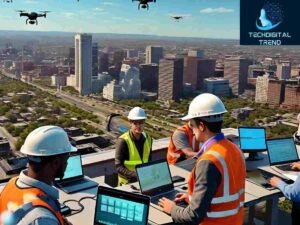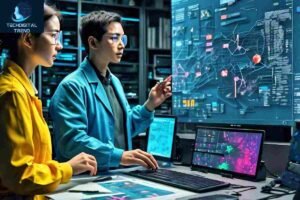Table of Contents
ToggleComputer Vision
Aerial surveillance has long been a cornerstone of security. It is also key for gathering intelligence worldwide. It offers unmatched advantages. This is true for military surveillance and border patrol. They both involve monitoring large areas from above. But, traditional aerial surveillance has limits. It needs much human help and can’t process vast data. Enter computer vision. It’s a revolutionary technology. It is transforming aerial surveillance by enabling automated analysis of visual data. Drones, satellites, and other airborne platforms capture this data. In this article, we’ve explored the rise of aerial surveillance. We will look at the role of computer vision in changing it. And, we’ll consider the effects on privacy, security, and more.
A Brief History of Aerial Surveillance
Aerial surveillance dates back to the earliest days of aviation. During World War I, the military used plane for reconnaissance. They gathered intelligence on enemy troop movements and positions. During the 20th century, aerial surveillance improved significantly. Advances in planes, cameras, and sensors drove this. The Cold War era saw much aerial surveillance. It checked strategic targets, gathered intelligence, and enforced border security.
Traditional challenges in aerial surveillance
Despite its effectiveness, traditional aerial surveillance methods face several challenges. One big limitation is the reliance on human operators. They must analyze large amounts of visual data collected from aerial platforms. This process is time-consuming, labor-intensive, and prone to errors. Also, old surveillance systems may struggle to spot and track interesting objects. They have trouble in complex or bad weather.
The rise of computer vision
Computer vision is a branch of AI. It focuses on teaching machines to interpret and understand visual information. It has emerged as a game-changer in aerial surveillance. Advanced algorithms and machine learning let computer vision systems analyze images. They also let them analyze videos. They do this from aerial platforms. They can identify objects, detect anomalies, and extract insights in real time.
How Computer Vision is Revolutionizing Aerial Surveillance
Object detection and recognition:
- Aerial surveillance utilizes computer vision. One of its main jobs is to detect and recognize objects. The algorithms have advanced. They can identify and classify various objects, such as vehicles and buildings. They can even spot specific individuals. They do this with high accuracy. This ability is invaluable for security and law enforcement agencies. They are responsible for monitoring critical infrastructure, borders, and public events.
Anomaly Detection:
- Computer vision enables automatic detection. It finds anomalies or unusual activities in aerial imagery. Surveillance systems analyze patterns and deviations from normal behavior. They alert operators to its security threats or safety hazards. These include unauthorized intrusions, suspicious movements, and environmental changes.
Tracking and monitoring:
- Computer vision enhances aerial surveillance in two key ways. It tracks and monitors objects. Surveillance systems analyze motion patterns and paths. They can track vehicles, boats, or people. They track them as they move. They do this across large areas in real-time. This skill is useful for border patrol. It’s also useful for search and rescue. And, for disaster response.
Environmental Monitoring:
- Security uses computer vision. It’s also used for aerial surveillance. The surveillance is for environmental monitoring and conservation. Drones have special cameras and sensors. They may take high-resolution pictures of wildlife habitats, forests, and oceans. This information helps scientists track endangered species. It also helps them check ecosystems’ health. They use it to spot changes from humans or nature.

Implications for Privacy and Ethics
Computer vision offers big benefits. It can improve aerial surveillance. But, it also raises key ethical and privacy concerns. Surveillance drones have advanced cameras and AI. They’ve deployed. They’ve sparked debates over security versus privacy. We must address questions about data collection, storage, and sharing. We’ve also addressed the risk of misuse or abuse of surveillance technologies. This is to ensure their responsible and ethical use.
Future Directions and Challenges
Looking ahead, computer vision will integrate with other new technologies. These include 5G networks, edge computing, and autonomous drones. This integration holds huge potential for improving aerial surveillance. However, many challenges remain. These include the need for strong data privacy rules. Also, for more transparent and accountable algorithms. And for fixing biases in AI systems.
Conclusion
Computer vision is changing aerial surveillance. It allows automated analysis of visual data from airborne platforms. It detects objects and anomalies. It is also used for tracking and environmental monitoring. The uses of computer vision in aerial surveillance are vast and diverse. But, we’ve must address ethics and privacy. This is to ensure responsible and clear use of these technologies. We’ve continued to use computer vision. We need to balance security, innovation, and individual rights. The world is more connected and surveilled. The sky has eyes. They are watching. But, how we’ve used that vision will shape the future of aerial surveillance and society.
Open this link: Tap to here















